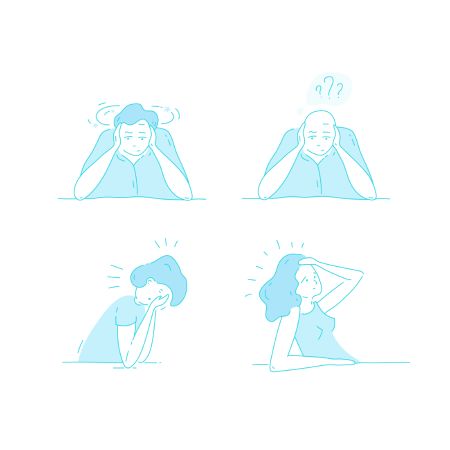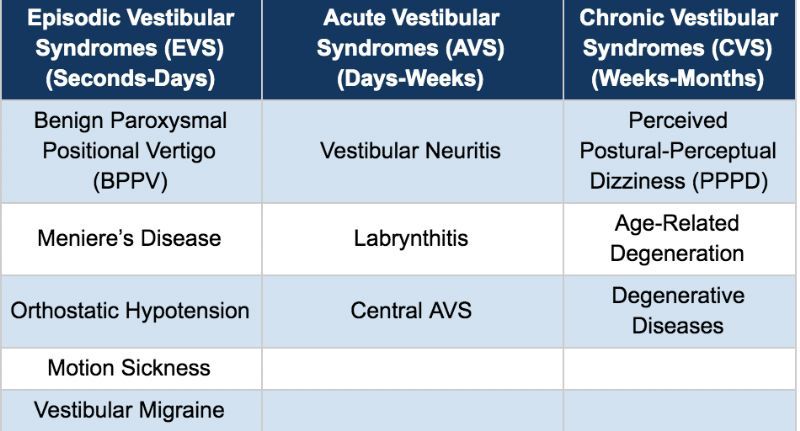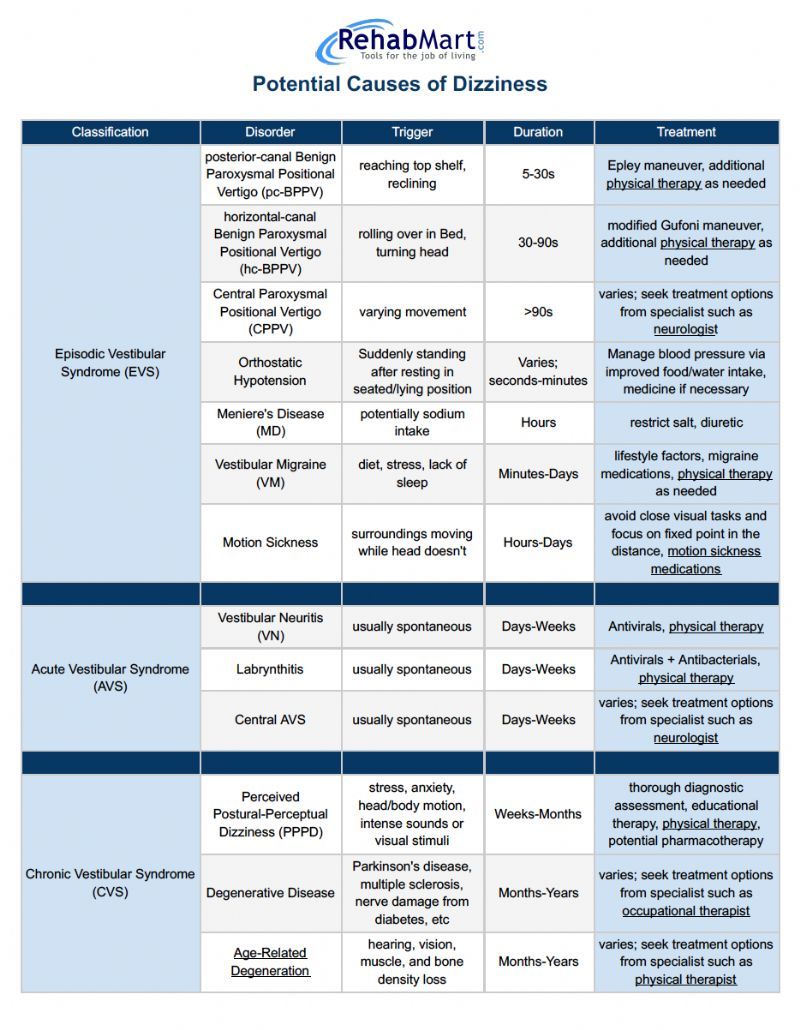 Written by Hulet Smith, OT
Written by Hulet Smith, OT
The word ‘dizziness’ is a blanket term that represents a myriad of symptoms, all of which are experienced differently. Dizzy symptoms can include feelings of being off-balance, being lightheaded, feeling faint, a sensation of spinning or vertigo, a floating or tilting feeling, and even blurred vision.
If you are experiencing any of these symptoms, then you surely want to subdue them quickly. Unfortunately, however, diagnosing dizziness based on a patient's symptoms has proven to be unreliable. Therefore, many people who experience dizziness are simply living with these sensations without improving.
Rather than treating symptoms for dizziness, the first step in solving the problem is figuring out what’s causing the dizziness. Sometimes dizziness is due to obvious causes like aging, medication side effects, or a head injury. More mundane things like simply not drinking enough water, stress, lack of sleep, or lack of exercise can all play a role in causing dizziness.
But it’s not always that simple.

Every year, hundreds of millions of dollars are spent in the United States on brain imaging for patients experiencing dizziness. In addition to the monetary cost, long wait times and additional appointments are often required during the diagnostic process, elongating the time that people spend feeling dizzy with no treatment and no answers.
Why are patients so quickly sent off by a doctor to get a brain imaging procedure done after they come in with dizziness symptoms? The problem can be traced back to what the word ‘dizzy’ can actually mean and where these symptoms originate.
Dizziness is often closely related to the vestibular system - a group of structures within the innermost part of the ear. The vestibular system is responsible for sending feedback to the brain about gravity, balance, and proprioception. Any type of disruption to this area is known as a vestibular syndrome and can cause some pretty unpleasant side effects.
The typical diagnostic model of looking at symptoms does not work well for patients with balance and vestibular disturbances. Let's see why.
Imagine you’re at your doctor’s office. What is one of the very first questions that they ask you? More likely than not, it will be something along the lines of “tell me about some of your symptoms.” If you respond by saying that you’re feeling dizzy, they will ask for further explanation. They will want to know what you mean by dizzy. At that point, you will hopefully be able to explain it as a more specific subtype of dizziness.
Even if you are able to pinpoint your dizziness into a certain subtype such as spinning or being lightheaded, there is no single symptom that points to a single cause. Doctors use patient history and symptom type as cornerstones to their diagnostic process, but they are focusing on the wrong details. Healthcare providers don’t need to focus on the specific type of dizziness that a patient is experiencing. In fact, they don’t need anything more specific from their patients other than the word ‘dizzy’ itself.
To start the process of finding and fixing the cause of dizziness, it’s much more important to place the highest priority on three things: the duration, timing, and potential triggers of the dizziness itself. If you’re looking to find out what might be causing your dizziness or symptoms that a patient or loved one is experiencing, we’ve designed an interactive tool that helps guide you to a most likely cause and familiarizes you with what the process should look like from a doctor.
The rest of this article briefly explains how to divide potential causes by the duration and triggers of the symptoms, and then also some suggested treatment protocols for each.
There are quite a few different types of vestibular syndromes, and by looking at the duration of these symptoms alone, you can categorize all of the syndromes into 3 distinct categories:
The chart below outlines some of the most common disorders in these three categories.

As you can see, each condition within the table above is placed within one of the three categories based on one thing: how long the dizziness lasts. Whether or not the dizziness is classified as lightheadedness, being off-balance, vertigo, or a combination of the three is not necessary to start the diagnostic process.
Now that you know the different types of vestibular syndromes, how does that help in getting rid of symptoms?
Well, once you can categorize the symptoms into one of these categories, you can take the next step in pinpointing a cause and treating that particular cause.
At this point, simple maneuvers and observational exams can be used to isolate a potential cause and start the treatment process. The comprehensive chart below maps out

When you claim that you’re feeling dizzy, what do you actually mean? Well, it could be a lot of things.
As you can see, dizziness is a complex symptom that can be caused by a wide range of conditions. For that reason, it can be hard for healthcare providers to narrow down potential causes.
Providers typically focus on symptom type to get a better understanding of any underlying conditions, but as you’ve seen, it’s often much more helpful to focus more on duration, timing, and possible triggers.
When healthcare providers transfer focus to these areas, it’s much easier to narrow down potential causes, reduce the use of imaging procedures, and promote a simple, effective diagnostic procedure with tools like the HINTS exam.
With a little bit of conscious effort, you can take your health into your own hands. If you do feel dizzy, keep up with how long it lasts, as well as any patterns that could be clues as to what might be triggering it. The same goes for caregivers whose loved ones may be complaining of dizziness.
Make sure you are managing stress; getting adequate food, water, sleep, exercise; and making sure that you aren’t changing anything in your daily routine (such as a new diet or medicine) that might be a factor in the dizziness.
You can use the chart above and others like it to go into doctor’s appointments prepared and understanding of what’s going on. Keeping track of information such as this will go a long way in treating dizziness and keeping it from coming back.
Additionally, healthcare providers can use this information to update the way they look at dizziness and how it’s diagnosed. This knowledge will spread, helping save everyone a lot of time and money, by improving efficacy and reducing the need for costly tests.
If you enjoyed this article, you may also be interested in the rest of our ongoing series on balance and dizziness. You can also find out what else we’re talking about, by visiting our Caregiver University homepage.
For all the best tools in rehabilitation, therapy, and durable medical equipment, be sure to visit RehabMart for all your clinical and home care needs.

Co-founder/CEO of Rehabmart, Pediatric Occupational Therapist, husband, and father. Passionate about connecting special needs kids with superb nutrition, sensory integration, and complementary health strategies. Excited about Rehabmart's mission to become the premier online educational platform which empowers caregivers by spotlighting innovative devices and interventions to achieve optimal patient response and recovery.